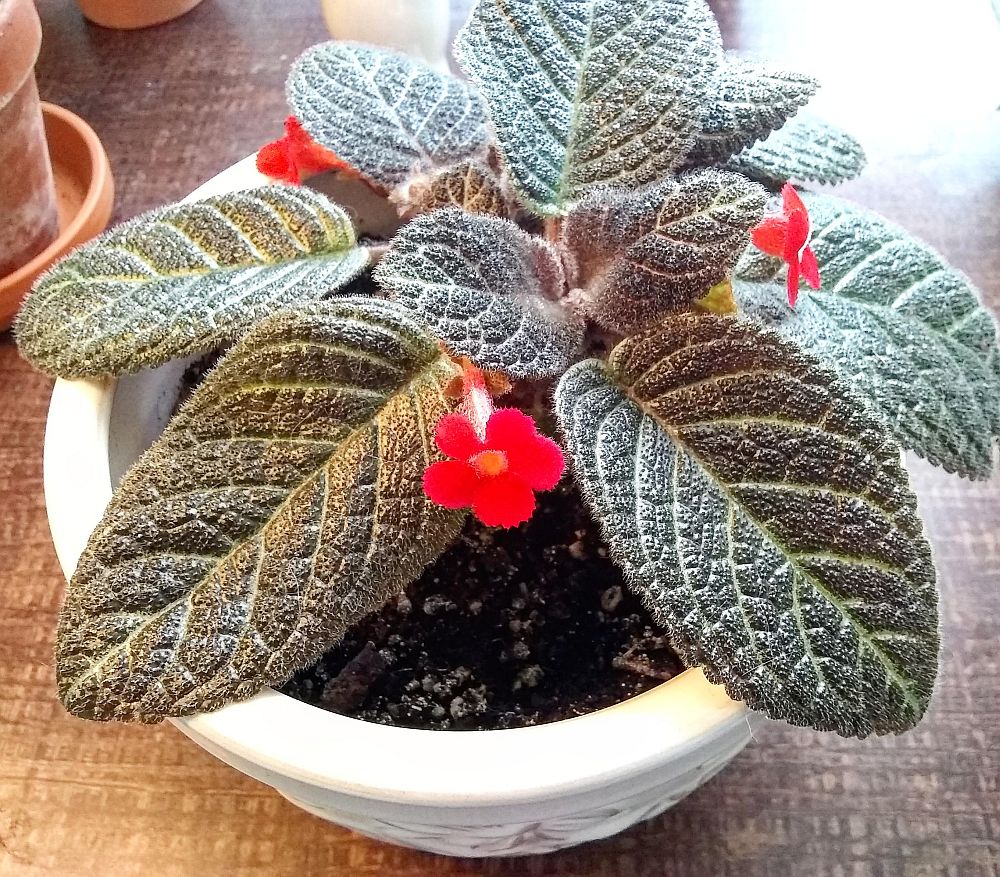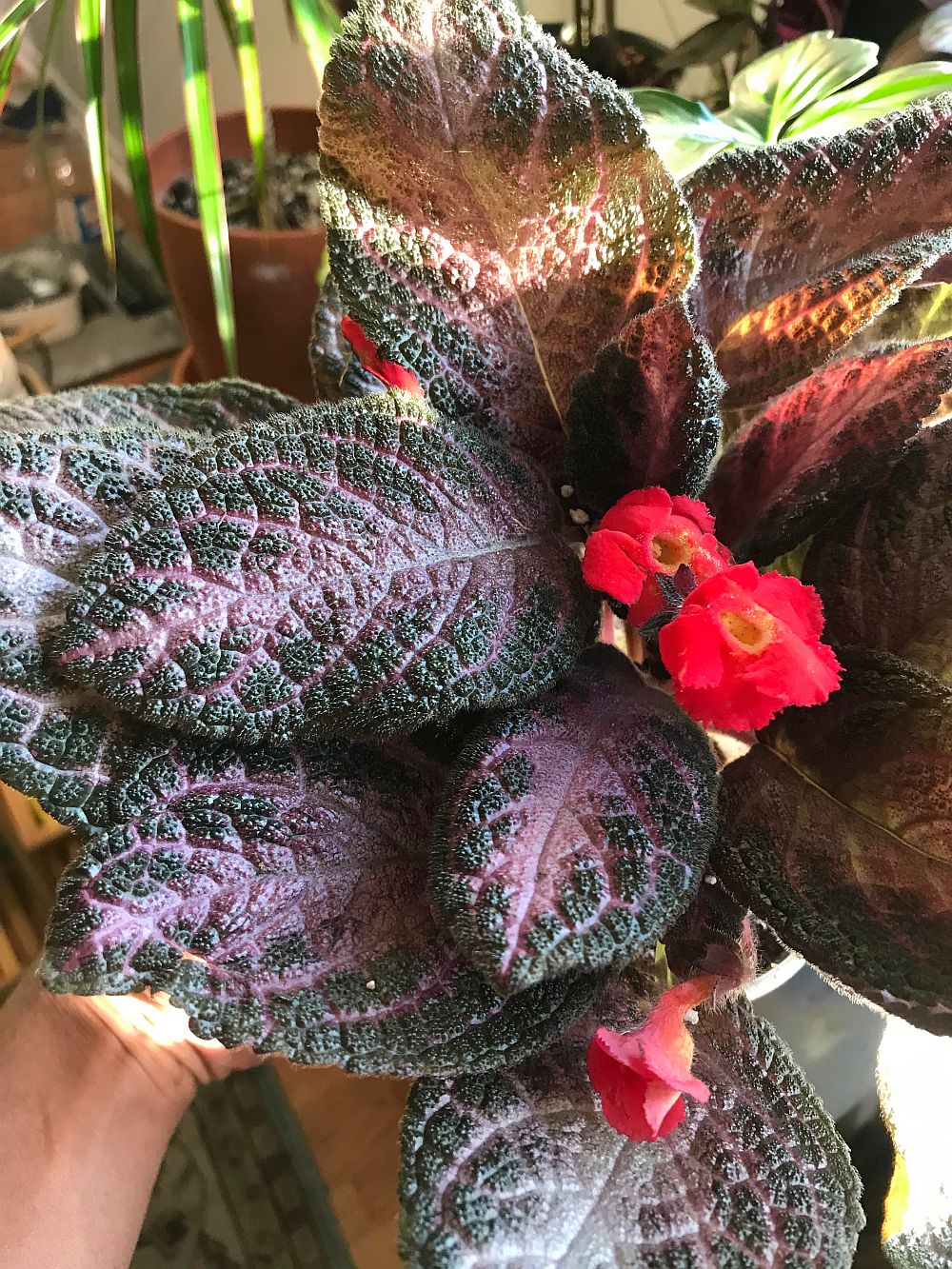Episcia Plant Care: How to Grow the Episcia Violet Flame
When I brought my first violet flame plant home, I was thrilled and eager to learn how to grow and care for it. Unfortunately, my dire efforts to take care of the first one flopped and I got a little disappointed, but after deep fact-finding, I found a few cues that helped me keep the second one alive and healthy. This houseplant is popular for its striking array of color on its foliage and flowers.

The Episcia cupreata is native to North and South America. It belongs to the Gesneriaceae family together with the African violet plant. It is also referred to as the flame violet, trailing violet, or the chocolate soldier plant.
To begin with, I had this misinformed notion that the flame violet is a very demanding plant to care for. Along the way, I have learned that it is an easy to grow plant that thrives under best growth conditions. In this, we will share with you the nitty-gritty of how to grow and care for the Flame violet.
Striking features of the Episcia Flame
It is a small attractive houseplant, with striking leaves and trumpet-shaped flowers. It grows to about 6 inches tall. The oval-shaped leaves grow into a rosette of about 2-3 inches long. It shows off an array of colors depending on the variety. They could be green and coppery brown, bronze, or even green and silver giving them a metallic sheen.
During the spring, it will grace your space with beautiful pink, red, orange, or white flowers. These trumpet-shaped beauties, together with the spectacular foliage, bring life and color.
You can never get enough of this trailing plant, especially since its stolons tend to grow and dangle over the container. This feature makes them perfect for hanging baskets or as table plants. So for you to make the most of their ornamental value, be sure to place them where they stand out.
[amazon box=”B075MMF5WF”]
Growing the Episcia Flame

All plants thrive within their unique growing conditions and the Flame violet is no exception. It requires the following conditions for it to have colorful healthy foliage all year:
Soil
You need the proper planting medium to keep your plant healthy. Like the African violet, the Flame violet needs a well-draining soil that is rich in humus or organic matter. It should contain 1 part leaf mold, 1 part peat moss, 1 part sand, and 2 parts loamy topsoil for the best outcome as suggested by a study conducted by the University of Georgia.
You can also use artificial mixes such as peat-vermiculite,peat-perlite. Perlite lightens the soil and makes it easier for aeration and drainage. Always remember to keep a few of the runners of the soil for a good floral sprout to also let them trail out of the pot.
Tip: For better drainage, use a half an inch of pot chard and an equal amount of charcoal.
Water
As a general rule of the thumb, your choice of planter or pot should have proper drainage holes. You already know that how often you water your plant and its soil moisture are vital for its growth.
My biggest mistake earlier was leaving my plant out for too long without water. I now know better. By knowing the moisture requirements of my plant, I am now able to create a watering schedule for the plant.
You don’t need expensive gadgets for such a schedule to know whether it’s time to water your plant. Just dip your finger and you’re good to go. The soil should remain moist but not soggy or dry, otherwise, the leaves will wilt and this will weaken the roots.
To avoid damaging the leaves of your plant with water, use the bottom watering method. You can do this by first filling the plant saucer with water, then add the potted Episcia Flame. Keep the plant in the water-filled saucer and let it absorb the water for at least thirty minutes.
Check to see the progress. If the water is all absorbed before the thirty minutes lapse, add a little more. But don’t exceed thirty minutes. Drain any excess water. Depending on the weather, do this at least once a month.
The goal here is to keep the potting mixture moist but not soggy. Too much water will cause the root and stem to rot killing your plant. Use warm to lukewarm water on your Plant. Coldwater splashed on the leaves causes light green discolored patches called ringspot.
Humidity
For the best results, grow your Episcia Flame under medium to high humidity levels above 50%. If the air in your home is dry, move your plant to a terrarium, kitchen, or bathroom for some humidity boost. You can also set it up in a pebble tray, but make sure the pot sits on the pebbles and is above the water.
If these two options are not available, try placing a humidifier near you Violet flame. Do not use a mister, it will encourage spotting and fungi infection. You know you can also place your Flame Violet among other plants for it to enjoy the benefits of nature.
How do you know if the air around your plant is dry? If the flower buds on your plant start to shrivel without opening or the edges of the leaves turn brown, that should be a huge red flag.
Light and Temperature
The name Episcia traces its origin from the word epikios meaning shady in Greek. Same as most peperomia plants and as the name suggests, it means that your plant prefers to be shielded from too much light.
From my little DIY garden, I also noticed that this plant does not need direct sunlight. So for it to give you the best of its blooms, expose it to 8 hours of bright indirect light during the day.
You’ll notice that this plant has very delicate and sensitive leaves. So much so that direct sunlight will cause sunburns on the leaves and damage. Sunburned leaves look dull and bleached, with dark brown edges.
Protect it from direct afternoon sunlight by moving it from the sun or creating shade.
Most of all, you don’t need natural light for your plant. It will do fine under artificial lights as long as it has some 12 to 14 hours of light. For the best foliage, a North facing window would be the most ideal spot for your plant.
It will also thrive in a southeast, east, or partially-shaded southern-facing window. It’s up to you to find the perfect spot for your little plant to thrive at.
This variety thrives in cooler temperatures. It prefers 55-65℉ at night and days not warmer than 75℉. Temperatures below 60℉ make the leaves brittle and curled up and also deforms the flowers.
Fertilizer
Your Flame Violet needs small does of fertilizer, especially during summer. Apply water-soluble fertilizer to your plant at least twice a month, except during winter. To avoid damaging the young roots, do it when the soil is moist.
How to Propagate your Violet Flame Plants
By far, propagation has got to be one of the most engaging and fulfilling activities for every gardener. You get a chance to create new plants from the main plant and this gives you a fresh start with the new buds.
You can propagate your Violets using leaves, runners, or seeds.
- If you have an old and mature plant that has shed a few of its leaves, start by trimming the runners, leaves, and roots.
- Place them in either water, sand, vermiculite, or sphagnum moss. You can speed up the process by first dipping them in rooting hormone.
- Cover the whole plant with a plastic cover or bag, to maximize on the humidity.
- In the case of seeds, spread them over moistened vermiculite or sphagnum. Watch out for the germination and beautiful transition into sprouts.
Flame violets grow new shoots within 3 to 4 weeks of propagation. You will spot the sprouts and which you can then repot into a bigger pot.
For optimal yield, ensure that your new plants are growing under the conditions we’ve shared. This way you will have beautiful blossoms within ten to twelve months of propagation
Grooming your Violet Flame
The Violet Flame doesn’t require so much grooming. You can prune it from time to time by plucking the old leaves outgrows its pot. Pruning also encourages fresh blossoms.
Do you have a violet flame? How is your experience so far? Let us know if the insights we have shared will make a difference going forward.
Don’t miss to drop your hacks and tips on the comments section below. We’d like to hear from you.
My flame violet almost died except for one small tendril. It’s growing back very slowly as an offshoot of a thicker stem. It still looks weak and not blooms. Is that normal?